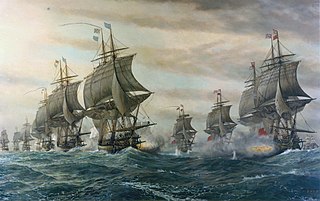
The Battle of the Chesapeake, also known as the Battle of the Virginia Capes or simply the Battle of the Capes, was a crucial naval battle in the American Revolutionary War that took place near the mouth of the Chesapeake Bay on 5 September 1781. The combatants were a British fleet led by Rear Admiral Sir Thomas Graves and a French fleet led by Rear Admiral François Joseph Paul, the Comte de Grasse. The battle was strategically decisive, in that it prevented the Royal Navy from reinforcing or evacuating the besieged forces of Lieutenant General Lord Cornwallis at Yorktown, Virginia. The French were able to achieve control of the sea lanes against the British and provided the Franco-American army with siege artillery and French reinforcements. These proved decisive in the Siege of Yorktown, effectively securing independence for the Thirteen Colonies.

Yorktown is a census-designated place (CDP) in York County, Virginia. It is the county seat of York County, one of the eight original shires formed in colonial Virginia in 1682. Yorktown's population was 195 as of the 2010 census, while York County's population was 66,134 in the 2011 census estimate.

The siege of Yorktown, also known as the Battle of Yorktown and the surrender at Yorktown, began September 28, 1781, and ended on October 19, 1781, at exactly 10:30 am in Yorktown, Virginia. It was a decisive victory by a combined force of the American Continental Army troops led by General George Washington with support from the Marquis de Lafayette and French Army troops led by the Comte de Rochambeau and a French naval force commanded by the Comte de Grasse over the British Army commanded by British Lieutenant General Charles Cornwallis.

The Battle of Yorktown or siege of Yorktown was fought from April 5 to May 4, 1862, as part of the Peninsula Campaign of the American Civil War. Marching from Fort Monroe, Union Maj. Gen. George B. McClellan's Army of the Potomac encountered Maj. Gen. John B. Magruder's small Confederate force at Yorktown behind the Warwick Line. McClellan suspended his march up the Peninsula toward Richmond and settled in for siege operations.

Thomas Nelson Jr. was a Founding Father of the United States, general in the Revolutionary War, member of the Continental Congress, and a Virginia planter. In addition to serving many terms in the Virginia General Assembly, he twice represented Virginia in the Congress, where he signed the Declaration of Independence in 1776. Fellow Virginia legislators elected him to serve as the commonwealth's governor in 1781, the same year he fought as a brigadier general in the siege of Yorktown, the final battle of the war.
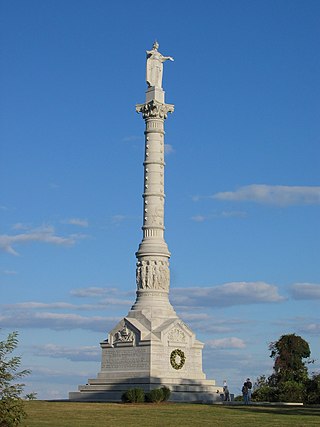
Colonial National Historical Park is a large national historical park located in the Hampton Roads region of Virginia operated by the National Park Service. It protects and interprets several sites relating to the Colony of Virginia and the history of the United States more broadly. These range from the site of the first English settlement at Jamestown, to the battlefields of Yorktown where the British Army was defeated in the American Revolutionary War. Over 3 million people visit the park each year.
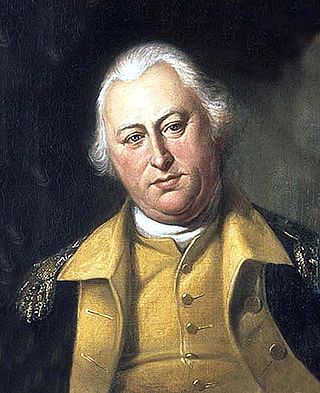
Benjamin Lincoln was an American army officer. He served as a major general in the Continental Army during the American Revolutionary War. Lincoln was involved in three major surrenders during the war: his participation in the Battles of Saratoga contributed to John Burgoyne's surrender of a British army, he oversaw the largest American surrender of the war at the 1780 siege of Charleston, and, as George Washington's second in command, he formally accepted the British surrender at Yorktown.

Marshal Jean-Baptiste Donatien de Vimeur, comte de Rochambeau was a French nobleman and general whose army played a critical role in helping the United States defeat the British Army at Yorktown in 1781 during the American Revolutionary War. He was commander-in-chief of the French expeditionary force sent by France to help the American Continental Army fight against British forces.
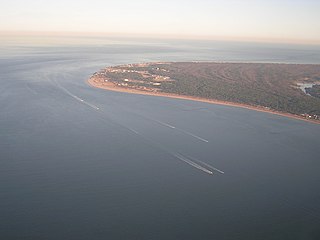
Cape Henry is a cape on the Atlantic shore of Virginia located in the northeast corner of Virginia Beach. It is the southern boundary of the entrance to the long estuary of the Chesapeake Bay.
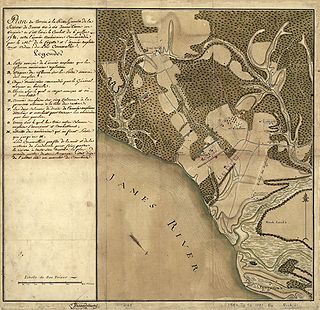
The Battle of Green Spring took place near Green Spring Plantation in James City County, Virginia during the American Revolutionary War. On July 6, 1781 United States Brigadier General "Mad" Anthony Wayne, leading the advance forces of the Marquis de Lafayette, was ambushed near the plantation by the British army of Earl Charles Cornwallis in the last major land battle of the Virginia campaign prior to the Siege of Yorktown.

Endview Plantation is an 18th-century plantation, including a park and historic home now operated by the independent city of Newport News, Virginia, located on Virginia State Route 238 in the Lee Hall community.
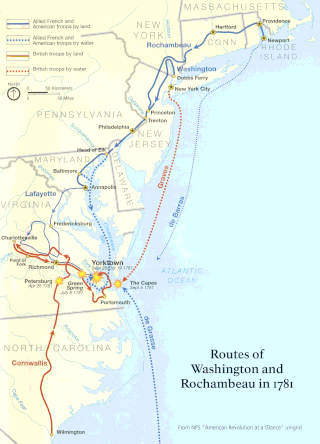
The Yorktown campaign, also known as the Virginia campaign, was a series of military maneuvers and battles during the American Revolutionary War that culminated in the siege of Yorktown in October 1781. The result of the campaign was the surrender of the British Army force of General Charles Earl Cornwallis, an event that led directly to the beginning of serious peace negotiations and the eventual end of the war. The campaign was marked by disagreements, indecision, and miscommunication on the part of British leaders, and by a remarkable set of cooperative decisions, at times in violation of orders, by the French and Americans.
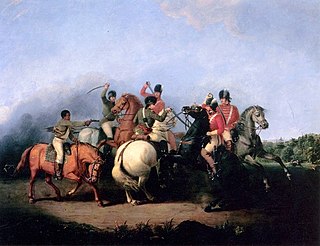
The southern theater of the American Revolutionary War was the central theater of military operations in the second half of the American Revolutionary War, 1778–1781. It encompassed engagements primarily in Virginia, Georgia, North Carolina, and South Carolina. Tactics consisted of both strategic battles and guerrilla warfare.
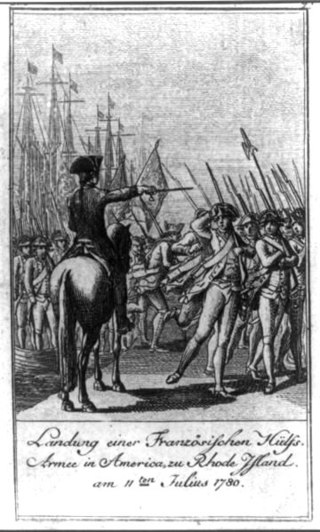
The Special Expedition was an expeditionary force deployed by France to North America to support the Thirteen Colonies against Great Britain in the American Revolutionary War. Arriving on 11 July 1780 under the leadership of the Comte de Rochambeau, it numbered up to 5,500 troops and played a decisive role in the final battles of the war.

Charles Cornwallis, 1st Marquess Cornwallis, KG, PC was a British Army officer, Whig politician and colonial administrator. In the United States and the United Kingdom, he is best known as one of the leading British general officers in the American War of Independence. His surrender in 1781 to a combined American and French force at the siege of Yorktown ended significant hostilities in North America. Cornwallis later served as a civil and military governor in Ireland, where he helped bring about the Act of Union; and in India, where he helped enact the Cornwallis Code and the Permanent Settlement.
Events from the year 1781 in the United States. This year marked the beginning of government under the Articles of Confederation as well as the surrender of British armed forces in the American Revolution.

The Surrender of Lord Cornwallis is an oil painting by John Trumbull. The painting, which was completed in 1820, now hangs in the rotunda of the United States Capitol in Washington, D.C.

Charles, Earl Cornwallis (1738–1805) was a military officer who served in the British Army during the American War of Independence. He is best known for surrendering his army after the 1781 siege of Yorktown, an act that ended major hostilities in North America and led directly to peace negotiations and the eventual end of the war.

The history of Virginia in the American Revolution begins with the role the Colony of Virginia played in early dissent against the British government and culminates with the defeat of General Cornwallis by the allied forces at the Siege of Yorktown in 1781, an event that signaled the effective military end to the conflict. Numerous Virginians played key roles in the Revolution, including George Washington, Patrick Henry, and Thomas Jefferson.
HMS Charon was a 44-gun fifth rate in service with the Royal Navy. Constructed in 1778, the ship took part in several conflicts in the Americas before being destroyed during the 1781 Siege of Yorktown. Her wreck lies in the York River.

















